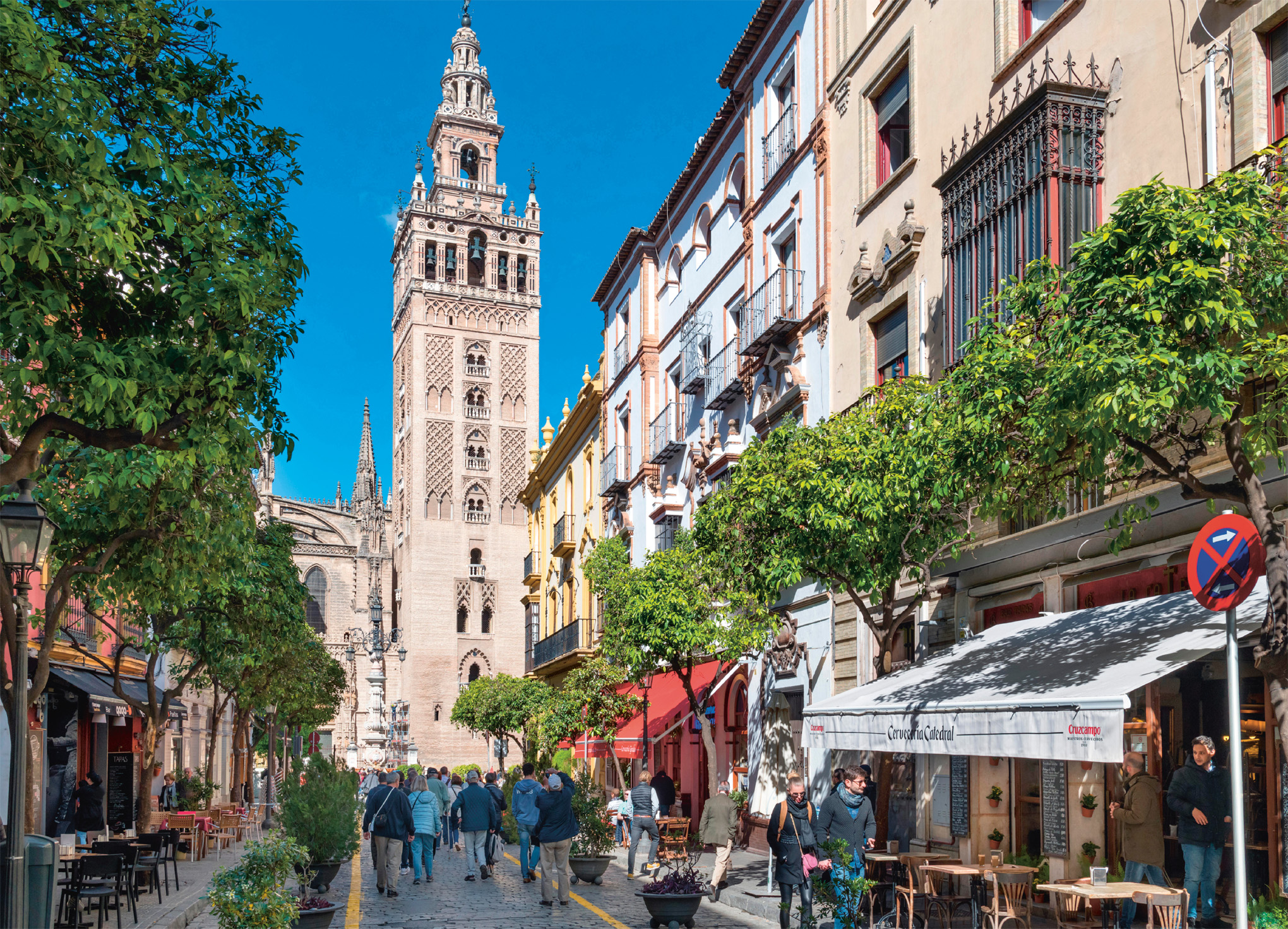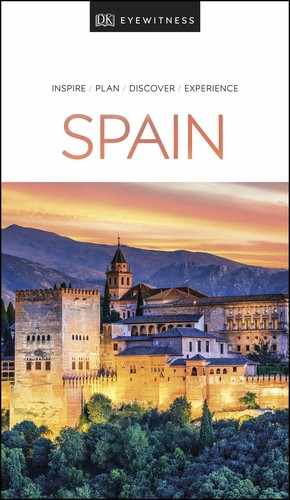Seville

t The tree- and café-lined Calle Mateos Gago, leading to La Giralda
Experience Seville
Seville was one of the first Spanish cities to fall to the Moors. It became part of the Caliphate of Córdoba in AD 712 after the Moorish Abbadid dynasty had defeated Roderic, the Visigothic king known as “the last king of the Goths”, at the Battle of Guadalete. As part of this affluent Islamic taifa (state), the city became a centre of chivalric pursuits, such as poetry, with its last Abbadid ruler, al-Mu’tamid, becoming known as the “poet king”. But this decadence attracted the contempt of the Almoravids, a group of conservative Berber Muslims, who took control of the caliphate in 1091. The Almoravids attempted to rule from afar, leaving themselves vulnerable to attack, and they were supplanted by a different Berber incursion – the Almohads in 1147. The Almohads made Seville their capital and undertook a programme of public building works, including the constructing La Giralda, a towering minaret attached to the mosque. In 1248, when the city was conquered by the Christian king Ferdinand III of Castile, the mosque became a cathedral.
Under Christian rule, Seville became a trading outpost and grew affluent from trade with England, Flanders and Genoa. In 1503, the city was granted exclusive rights as the port of entry and exit for all goods amassed from the New World. The city was hit hard by the economic crisis that hit Europe in the 17th century and Seville languished for many of the following years, with Napoleon’s forces taking control in 1810. After the French were forced to retreat by Anglo-Spanish counterattacks in 1812, Seville was regenerated. The city’s cultural importance was showcased in the Ibero-American Exposition of 1929 and again, almost a century later, in the Expo ‘92.
